In an oversaturated market, a strong brand identity is more than just a logo or a tagline—it’s the core of how customers perceive and connect with your business. It separates you from the competition, builds trust, and creates loyal customers. Whether you’re launching a startup or rebranding an existing business, developing a strong brand identity is essential for long-term success.
This comprehensive guide covers everything you need to know about building a powerful brand identity, from strategy and design to implementation and consistency.
What Is Brand Identity?
Brand identity encompasses all the visual and emotional elements that represent your business. This includes your logo, color palette, typography, imagery, tone of voice, and the overall personality of your brand. It’s how you present yourself to the world and how customers recognize and remember you.
Why Brand Identity Matters
- Differentiation: Sets you apart from competitors.
- Recognition: Helps customers identify and recall your brand.
- Trust: Builds credibility and emotional connection.
- Consistency: Guides all communication and marketing efforts.
- Loyalty: Creates brand advocates and repeat customers.
Steps to Create a Strong Brand Identity

Define Your Brand Strategy
Your brand identity starts with a clear brand strategy. Define your mission, vision, core values, and unique selling proposition (USP).
| Brand Strategy Components | Description |
|---|---|
| Mission | What your company stands for and aims to achieve |
| Vision | The long-term goals of your business |
| Core Values | Principles that guide your business behavior |
| USP | What makes your business different from the rest |
Understand Your Target Audience
Know who your ideal customers are. Use demographic and psychographic data to understand their needs, preferences, behaviors, and pain points. This helps you tailor your messaging and design to resonate with them.
Conduct Market Research and Competitor Analysis
Evaluate competitors to understand industry standards, customer expectations, and brand gaps you can fill. Identify what works and what doesn’t in your niche to refine your positioning.
Develop Your Brand Personality and Voice
Decide how you want to communicate with your audience. Your brand personality could be professional, playful, authoritative, or friendly. Your brand voice should reflect this personality consistently across all channels.
| Brand Personality Trait | Suitable Voice Style |
|---|---|
| Professional | Formal, precise |
| Friendly | Conversational, warm |
| Bold | Confident, assertive |
| Creative | Imaginative, quirky |
Create Visual Brand Elements
This is where the visual identity comes into play:
- Logo: A distinctive, memorable logo that captures your brand essence.
- Color Palette: Choose 2-5 primary and secondary colors that reflect your brand’s mood.
- Typography: Select fonts that are legible and align with your personality.
- Imagery: Use photos, illustrations, and graphics that support your message.
- Design System: Build a cohesive set of design rules to maintain consistency.
Craft a Brand Style Guide
A style guide outlines how your brand should look and sound. It ensures consistency in:
- Logo usage
- Color and font specifications
- Tone of voice
- Image guidelines
- Dos and don’ts
Apply Your Brand Across All Touchpoints
Your brand identity should be evident in every customer interaction:
- Website and app
- Social media profiles
- Business cards and packaging
- Email marketing
- Customer service tone
Maintain Brand Consistency
Consistency builds trust and makes your brand recognizable. Use templates, conduct regular audits, and train your team to adhere to the brand guidelines.
Gather Feedback and Evolve
Brand identity isn’t static. Collect feedback from customers, monitor performance metrics, and be open to updates that align with market shifts or customer needs.
Additional Topics to Strengthen Brand Identity

Brand Storytelling
Humans connect with stories. Share the origin, mission, and journey of your brand to foster emotional engagement. Make your story relatable and authentic.
Emotional Branding
Build deeper relationships by aligning your brand with values and emotions that resonate with your audience. This could include sustainability, innovation, or community support.
Brand Positioning Statement
A concise sentence that defines your brand’s place in the market:
“For [target audience], [brand] is the [category] that [benefit], unlike [competitor], we [USP].”
Personal Branding for Founders/Leaders
Especially in small businesses, the founder’s personal brand can influence the overall brand. Ensure consistency between personal and business identity.
Customer Experience and Brand Perception
Customer service, delivery times, packaging, and after-sales support all impact how your brand is perceived. Make the customer experience a seamless extension of your brand.
Brand Architecture
If you offer multiple products or services, use brand architecture to organize them:
- Monolithic (Branded House): One main brand with sub-products (e.g., Google)
- Endorsed: Parent brand supports sub-brands (e.g., Marriott and Courtyard by Marriott)
- Freestanding (House of Brands): Distinct brands under one company (e.g., Procter & Gamble)
Common Branding Mistakes to Avoid
- Inconsistency in visual and verbal messaging
- Ignoring the target audience’s preferences
- Overcomplicating the logo or name
- Copying competitors
- Failing to evolve the brand when needed
ALSO READ: How to Build a Successful Business Network
Conclusion
Creating a strong brand identity is a strategic process that involves understanding your business, your market, and your audience. From defining your brand’s foundation to implementing consistent visuals and messaging, every detail plays a part in shaping public perception.
By following the steps outlined and integrating additional branding strategies, you can build a brand that not only stands out but stands the test of time.
Invest in your brand identity like you would in any critical business asset—because it is one. A well-crafted brand drives awareness, fosters loyalty, and powers growth.







